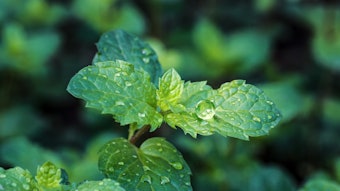Australia is a large country covering latitudes from 10° to 43° south of the equator. This provides AustraIia with a wide range of climatic and geographic regions. In the south of the continent, the river valleys of northeast Victoria have well-drained fertile soils and abundant supplies of irrigation water of excellent quality These factors have long made the region a production center for tobacco and hops. They also provide a suitable setting for the growth of peppermint and other essential oil crops.
The traditional peppermint regions of the US occur in a band of latitude covering approximately 42°N to 49°N. There are peppermint oil plantings in Tasmania at latitudes 40°S to 43°S. The peppermint plant is sensitive to day length, and it was originally considered by some that maturity, and therefore oil quality, could be a problem in areas north of Tasmania. It was perceived that growing tbe peppermint at lower latitudes would result in a peppermint oil too high in menthofuran.
It is apparent that other climatic influences override latitude controls on plants. In the fertile foothills of the Victoria ‘Alps’ (mountains at a latitude of 36°S along the border between Victoria and New South Wales), a high diurnal temperature variation with clear, hot days and clear, cool nights during the summer months typically leads up to harvest time in February. The cool nights in summer allow the Australian industry to consistently produce high quality peppermint oils (2-3% in menthofuran levels). In the southern hemisphere, the normal harvest period for single-cut peppermint is from the last week in January to the middle of February. The times may vary depending on the season. This harvest timing allows the Australian crop to be marketed contra-season to harvests in the US.










